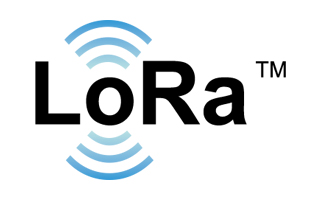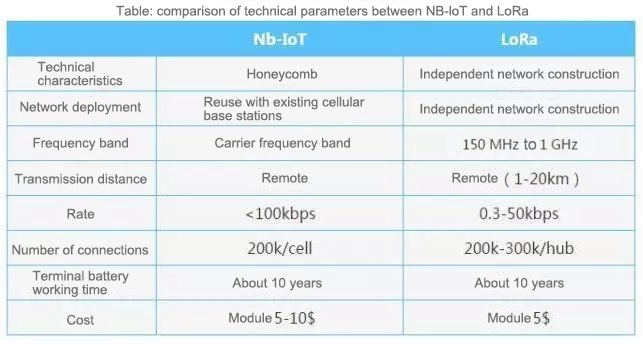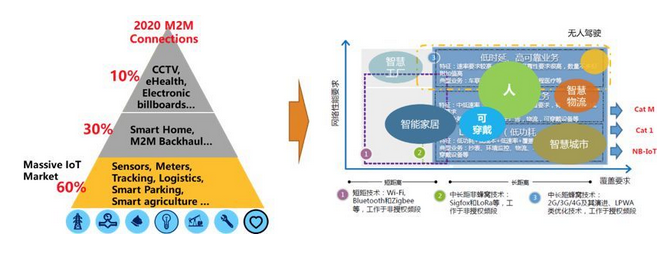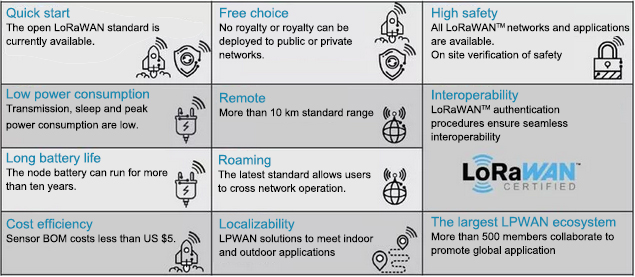
Remove fog and re recognize LoRa Internet of things
LoRa Alliance and Tencent announced that Tencent has joined the LoRa Alliance at the highest level, which will further accelerate the adoption of LoRaWAN technology.
This is another important event following Alibaba, China Unicom's cooperation with Semtech and Google's entry into the LoRa alliance, which undoubtedly provides a huge driving force for the accelerated development of LoRa technology in China.
With the rapid development of the Internet of Things industry, Alibaba, Google, Tencent and other giant platforms, a large number of LoRa applications at home and abroad for commercial use, so that LoRa has become one of the mainstream Internet of Things in fact.
This article will help you understand a more realistic LoRa network and application scenario by reading the three misunderstandings of the LoRa system.
Myth 1: is there a uniform standard for the Internet of things?
Over the years, the industry has been accustomed to the standardization and unification of the Internet of Things, and naturally this "either-or" concept of the "Internet of Things" option has been used in the Internet of Things LPWAN market.
In fact, LoRa and NB-IoT and e-MTC belong to LPWAN network, with complementary technological capabilities and application scenarios.
Starting from the technology itself, the following is a technical comparison between NB-IoT and LoRa.

It can be seen that both technologies belong to the category of LPWAN, application scenarios and technical constraints are very similar, NB-IoT advantage lies in the operator's global coverage and bandwidth dedicated. However, there will inevitably be problems of connection blindness and autonomy, such as the 4G network which has been built for many years, even in the city there are still signal transmission black spots, users will still use WiFi network at home and in the park as a supplement.
We extract three dimensions from the requirement of connecting ability: connection speed, coverage and connection scale.
Combining with the current mainstream technology standards of the Internet of Things, in order to show more intuitively, we have made a typical application scenario of the Internet of Things and the corresponding view of technical requirements, as follows:

The two characteristics of the picture are reflected intuitively.
First, the limitations of technology.
There are huge differences in the network speed, coverage requirement and link number between different scenes. No one technology can meet the end-to-end, all-round differences between different application scenarios of the Internet of Things.
For example, driverless and home hydropower meters have extreme network performance requirements. It is difficult for us to use the same network technology to meet the two huge differences in the scene needs, which will either cause extreme waste of network resources, or there will be a huge shortage of network resources.
The two is the symbiosis of technology.
The same application scenario often contains multiple types of connection requirements. For example, vehicle interconnection needs include unmanned driving (ultra-high speed, ultra-high reliability), on-board entertainment (medium speed, moderate reliability), body perception (low speed, low reliability) and many other types. Different interconnection technologies are needed to coexist and cooperate in order to provide a comprehensive solution.
Therefore, the Internet of things will be a combination of different types of technology.
Myth two: does LoRa have application scenarios?
Different technical features lead to different application scenarios, and LoRa's greatest value is ease of deployment and autonomy.
Generally speaking, LoRa is more suitable for the scenarios where enterprise users have high requirements for autonomy and rapidity, continuous coverage and deep coverage, such as park, factory, factory, farm, logistics distribution center, complex, human settlements and so on.
"The species that survive are not the strongest, nor the smartest, but the ones that respond quickly to change." Darwin's sentence probably best explains the value of LoRa.
LoRa currently provides connectivity similar to WAN, and the gateway market already has outdoor, indoor and even desktop routing size devices, everyone can build their own LoRa network, as convenient as using Wifi connection, so the two complement each other, application scenarios will help each other grow.

The application scenario of LoRa is also entering the commercial stage rapidly and rapidly.
In April this year, Aliyun and Zhejiang Unicom jointly announced that the Internet of Things platform based on LoRa devices and wireless radio frequency technology has begun commercial trials.
At present, the LoRa network built by Alibaba in Hangzhou and Ningbo has commercial conditions. Alibaba is also experimenting with LoRaWAN in its own business scenarios, such as the rookie garden, which covers an area of about 200,000 square meters with four LoRa micro-gateways and four base stations.
For example, the first small town of the Internet of Things in China in Wuxi Hongshan has used LoRa transmission technology and Internet of Things communication protocol to manage the city. "We have deployed a large number of sensors in Hongshan, through the LoRa protocol, data acquisition to our platform, to do a unified management." Mr. Wang Yunci from Ali cloud IoT said.
Traditional TV giant Radio and Television Group, with the help of LoRaWAN technology, relying on spectrum resources, quickly and cheaply built a city-level LPWAN network. In the Shanghai Oriental Pearl Project, LoRaWAN technology was adopted to undertake the landing and operation of intelligent schemes in six districts of Shanghai, to make a comprehensive perception of urban fire protection, community safety and urban lonely and widowed elderly, and to speed up the disposal process through the event-related departments to help the urban government to improve work efficiency and also to help the citizens. Get better service.
Myth three: is LoRa used internationally?
Under the promotion of LoRa Alliance, LoRaWAN has landed in many countries and regions. Nowadays, most of the shipments are used in the accounting industry. At present, data acquisition such as logistics, environmental sensing and park monitoring is gradually emerging.
So far, alliance statistics: LoRa Alliance published data in 2018, has begun to build networks in 41 countries, more than 350 cities began to pilot, with 67 network operators.
Us: the Senet network covers 225 cities in 23 states.
Comcast, the largest cable company, announced the adoption of LoRa technology, which will first deploy its network in Philadelphia and San Francisco and provide metering-related (meter reading, etc.), environmental monitoring-related (temperature and humidity, pollution, noise monitoring, etc.) and location-tracking-related services.
France: Orange has completed the nationwide coverage of LoRaWAN network in France.
India: Tata set up a network in Mumbai and Delhi, and put it into use in the logistics industry.
Australia: Telstra announced its pilot in Melbourne.
South Korea: SK Telecom deployed a nationwide LoRa network in the first half of 2016 to provide LoRa-based Internet of Things services, and announced the charging method.









